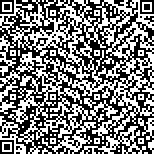| 摘要: |
| 作为中国早期先民的重要创造物,
文字与建筑都反映着人类对于世界的认识。
通过分析汉字构形可以阐明汉字与建筑之间
的形意同构特征,可以为以文字构形与构意
为基础研究建筑类型演化提供理论支撑。进
一步以甲骨文、金文以及先秦传世文献中出
现的居住建筑类文字为依据,分析居住类建
筑类型与其中重要建筑的内涵,在早期建筑
遗址匮乏的情况下,为中国早期居住建筑类
型的推演还原提供线索。 |
| 关键词: 先秦 古文字 汉字构形学 居住
建筑 |
| DOI:10.13791/j.cnki.hsfwest.20230821004 |
| 分类号: |
| 基金项目:国家自然科学基金面上项目(52278004) |
|
| Trace the type of early Chinese residential building from the perspective of Chinesecharacter configuration |
|
HU Bin,WU Huiying,CHEN Wei
|
| Abstract: |
| As the important creation by ancestors in early Chinese history, both Chinese character and
architecture reflect understanding of Chinese people of the world. Early Chinese architecture has not
been preserved due to its special material of soil and wood, so the study of early architecture can only
be done with the help of archaeological sites and records in ancient books. The ancient Chinese
characters, as ideographs, recorded the form and content of early architecture with their shape and
meaning. The study of the formation of Chinese character can clarify the isomorphic feature of form
and meaning between Chinese characters and architecture, providing theoretical support for the study
of the evolution of architectural types based on the form and meaning of Chinese characters. Since
there is a certain mutual proof between ancient Chinese characters and ancient architecture, the
analysis is further based on the inscriptions on oracle bone scripts, jinwen(金文) and the residential
architecture characters in pre-Qin literature, to analyze the type of residential architecture and the
connotation of important buildings and provides clues for the deduction and restoration of early
residential building types in China in the absence of early architectural sites. In the first part, from the
perspective of cultural semiotics, it is pointed out that both Chinese characters and traditional Chinese
architecture are a kind of symbols, reflecting the conceptual archetypes of human collective society
together. By analyzing the symbolism of the Chinese character “yi(一)、er(二)、san(三)” and the
space of early Chinese architecture, it discusses the specific representations of the different
components of the Chinese character on the concept of space and time of early Chinese people in
traditional Chinese culture, and the specific representations of the space and components of traditional
Chinese architecture on the concept of space and time of early Chinese people. Then,through the
“structure-function” analysis in Chinese character morphology, the specific ways and results of
different structures of Chinese characters on architectural form and function are discussed. It is
proposed that the shape and meaning of the character can completely express the whole content of the
Chinese ancient architecture it refers to, and can be used as a criterion for the classification of the
building. In the second part, in order to form a more comprehensive understanding of the types of
residential buildings in early China, based on the Shuowen Jiezi (说文解字), supplemented by the
excavated systematic early Chinese characters, it have exhaustively counted the characters related to
residential buildings in oracle-bone inscriptions, jinwen (金文), and Pre-Qin documents, which form
the basis of the research in this paper, and categorized them according to the meaning of textual
configurations, so as to discuss the characteristics and connotations of the different types of residential
buildings in early China in a more intuitive way by means of quantitative analysis and diagrammatic
representation. Through quantitative analysis and graphical representation, the characteristics and
connotations of different types of residential buildings in early China are discussed more intuitively.
At the same time, based on the statistical results, it analyzed the components of different architecturaltypes in terms of form and function, and symbolism, and summarize the characteristics of the residential buildings they represent. In the third part, based on the
statistics and analysis of the previous characters, combined with the early ruins and documentary records, the five types of residential buildings, namely, “caves
(穴)”, “nests(巢)”, “palaces(宫室)”,“ mansions(家宅)” and “pavilions(楼阁)”, were mainly studied, and the characters contained in each type were
interpreted one by one, and the specific architectural forms and functions reflected were investigated, and then, by synthesizing and comparing the similarities
and differences in the architectural images expressed in the texts contained in the same building type, the horizontal, vertical, and semi-subterranean cave
dwellings in the early cave dwellings, the different nesting spaces expressed in the early nesting dwellings by the words kang(康), geng(庚), and yong(庸),
etc., the architectural spaces comprising the palaces in the early period, the early house spaces named by different standards, and the early “lou(楼) and ge
(阁)” buildings are all discussed in depth, then a more comprehensive understanding of the above five types of residential buildings is formed. |
| Key words: Pre-Qin dynasty ancient characters Chinese character configuration residential building |


